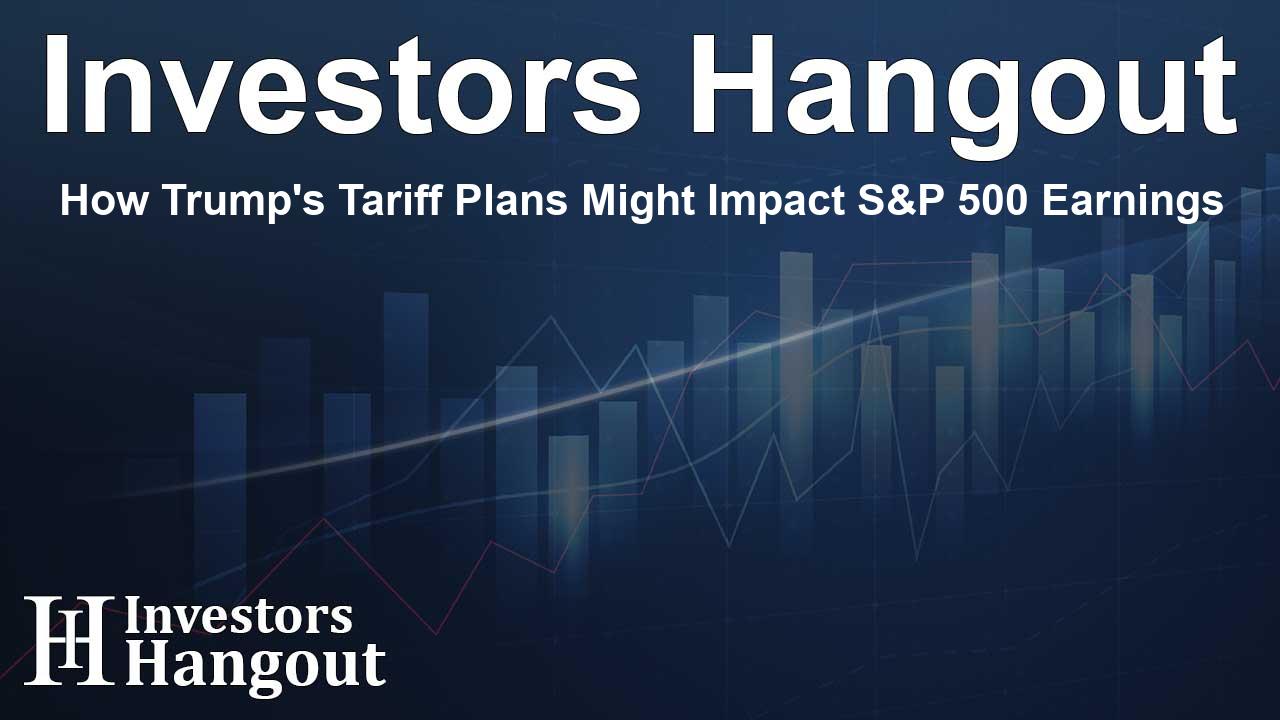How Trump's Tariff Plans Might Impact S&P 500 Earnings

Examining Trump's Tariff Proposals and Their Consequences
As the presidential election draws nearer, the tariff proposals from Republican candidate Donald Trump are becoming a hot topic. Analysts at Barclays have weighed in on how these tariffs could affect the earnings of companies listed in the S&P 500 if Trump were to put them into action after winning a second term.
The Range of Proposed Tariffs
Trump's proposal includes hefty tariffs on roughly $3 trillion worth of imports entering the United States. He has suggested imposing levies of 10% to 20% on all foreign products and an eye-popping 60% tax on goods coming from China. The aim of these tariffs is to protect jobs for American workers and tackle what Trump considers unfair trade practices from countries like China and those in the European Union with whom the U.S. has significant trade deficits.
Financial Predictions
Barclays claims that the revenue generated from these tariffs could total trillions of dollars, potentially covering the costs of the significant corporate tax cuts Trump is pursuing. Nevertheless, their analysis suggests that the S&P 500 could see a decline in earnings of about 3.2% in the year following the implementation of these tariffs. Should other countries retaliate with their own tariffs, this decline could extend further, possibly reaching an additional 1.5%.
Broader Economic Considerations
While the direct effects of the tariffs may seem limited at first, Barclays analysts caution that we shouldn't ignore the secondary consequences. Higher prices and slower growth rates resulting from these tariffs could create additional economic challenges, posing further hurdles for corporate earnings.
Sectors at Risk
Analysts at Barclays have pinpointed certain sectors as particularly vulnerable to the effects of these tariff changes. The materials, discretionary spending, industrials, technology, and healthcare sectors are all highly dependent on global supply chains, making them more exposed to the disruptions caused by tariffs.
The Political Environment and Its Effect on Trade Policies
In the wake of a pivotal debate between Trump and his Democratic opponent, Kamala Harris, recent polling suggests that Harris has a slight edge in the presidential race. Nevertheless, the competition remains fierce, especially in critical swing states where every single vote matters.
Congressional Gridlock and Policy Direction
No matter who wins, Barclays anticipates that Congress will maintain its division early on in the new administration. This split could lead either Trump or Harris to rely more heavily on executive actions to push through policies that don’t require approval from the legislature. Setting tariffs falls within the significant powers of the president, allowing for swift reactions to economic developments.
Final Thoughts: Watching Tariff Changes
In summary, the implications of Trump's tariff proposals could have far-reaching effects—not just on S&P 500 earnings but also on broader international trade strategies. Analysts and investors will be keeping a close watch on how these developments progress, as they'll have both immediate and long-term repercussions across various sectors of the economy.
Frequently Asked Questions
What are Trump's proposed tariffs?
Trump's proposed tariffs feature a 10% to 20% levy on all foreign goods and a hefty 60% tax on imports from China, aimed at approximately $3 trillion in total imports.
How will these tariffs impact S&P 500 earnings?
Barclays estimates that the tariffs could result in a 3.2% decrease in S&P 500 earnings and an additional 1.5% drop if other nations respond with similar tariffs.
Which sectors are most at risk from these tariffs?
Industries such as materials, discretionary spending, industrials, technology, and healthcare are viewed as the most vulnerable, primarily due to their reliance on global supply chains.
What is the political context surrounding these tariffs?
The political scene is marked by a tight presidential race, with polls showing Trump's opponent holding a slight lead, making trade policies fundamental in the campaign.
How might the new president implement these tariffs?
Depending on the election results and the state of Congress, the next president could use executive action to impose tariffs without needing to go through the legislative process.
About The Author
Contact Logan Wright privately here. Or send an email with ATTN: Logan Wright as the subject to contact@investorshangout.com.
About Investors Hangout
Investors Hangout is a leading online stock forum for financial discussion and learning, offering a wide range of free tools and resources. It draws in traders of all levels, who exchange market knowledge, investigate trading tactics, and keep an eye on industry developments in real time. Featuring financial articles, stock message boards, quotes, charts, company profiles, and live news updates. Through cooperative learning and a wealth of informational resources, it helps users from novices creating their first portfolios to experts honing their techniques. Join Investors Hangout today: https://investorshangout.com/
The content of this article is based on factual, publicly available information and does not represent legal, financial, or investment advice. Investors Hangout does not offer financial advice, and the author is not a licensed financial advisor. Consult a qualified advisor before making any financial or investment decisions based on this article. This article should not be considered advice to purchase, sell, or hold any securities or other investments. If any of the material provided here is inaccurate, please contact us for corrections.
